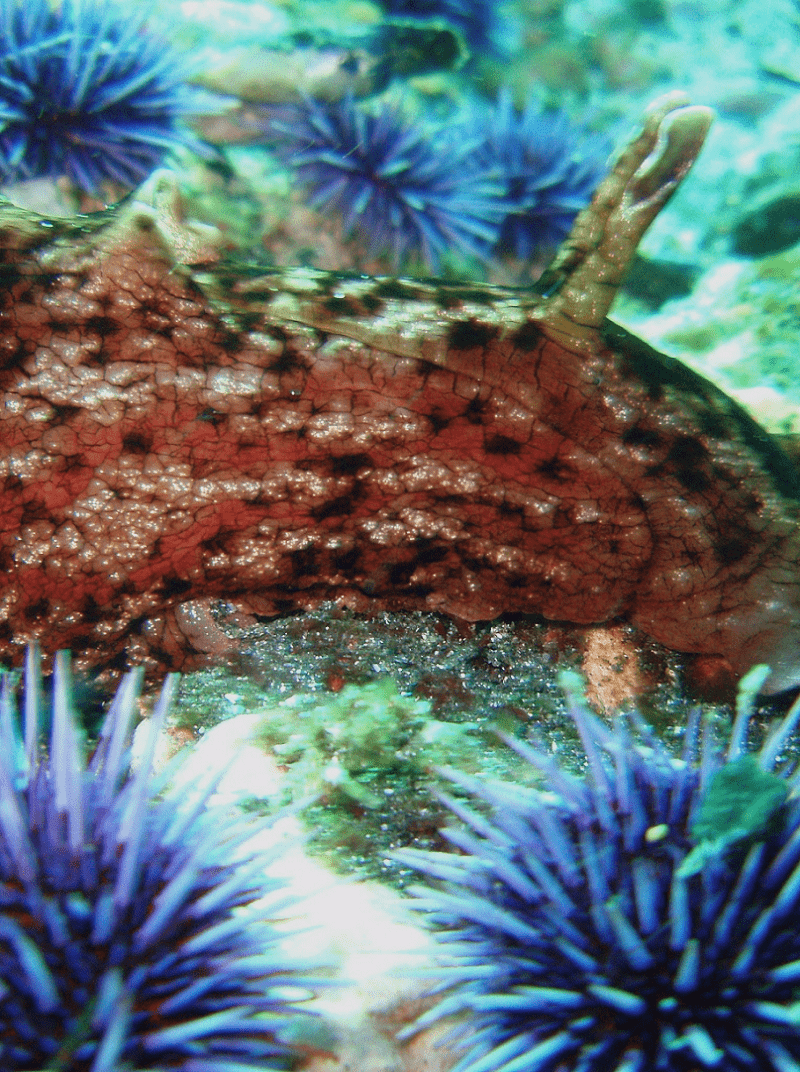
California Sea Hare Facts
- Perhaps most notably, the informative term of California Sea Hare serves as the common name of a remarkable variety of sea slug. Not only that, but the scientific name of the animal also provides a clue to where the species lives.
- However, though, this remains the somewhat difficult to pronounce term of the Aplysia californica. But, regardless of which of these terms you use to speak of it, this truly fascinating marine invertebrate represents a most impressive creature.
- Quite fortunately for those who appreciate it, the amazing California Sea Hare also appears to currently be maintaining a sufficient, and relatively stable, population. Plus, this appears to hold true throughout the entirety of its range of habitation.
- The problem, though, is the fact that the region of the world in which it appears remains severely limited. Regardless of the latter, though, the IUCN presently has no listing for the animal on its Red List of Threatened Species.
- The remarkable sea slug must nonetheless be considered to be especially vulnerable at this time. This sad situation further occurs due to two specific factors. Not surprisingly, these are the same two currently facing many species.
- Firstly, the limited range of the wonder of Nature now renders it particularly vulnerable to the peril of habitat loss. Secondly, however, this impressive invertebrate remains especially at risk from the ongoing effects of climate change.
Related Articles
California Sea Hare Physical Description
First of all, the amazing California Sea Hare ranks as a moderate-sized type of sea slug. That holds true due to the fact that mature specimens attain an average length of approximately 8 in (20 cm). An average adult weight further equals roughly 2.2 lb (1 kg).
But, exceptional individuals do occur. In fact, some individuals achieve lengths of as much as 16 in (40 cm), and weights of up to 5 lb (2.3 kg). Unlike many species, this invertebrate displays no noticeable degree of the physical characteristic of sexual dimorphism.
Adults of both genders display identical physical traits. Its coloring, varies significantly between individuals. But, most specimens of the California Sea Hare show shades ranging between greenish-brown to reddish-brown. It also boasts four tentacles near the head.
- Kingdom: Animalia
- Phylum: Mollusca
- Class: Gastropoda
- Order: Heterobranchia
- Family: Aplysiddae
- Genus: Aplysia
- Species: A. californica
California Sea Hare Distribution, Habitat, and Ecology
Quite sadly, the truly gorgeous California Sea Hare possesses a severely restricted, and also fragmented, range of habitation. This holds true partly because of the regrettable fact that the great majority of its numbers live almost exclusively in one area.
That inhabited area consists of the region along the Pacific coast of the state of California, in the United States, and northern Mexico, in North America. Scattered individuals nevertheless occasionally appear along the beaches of the state of Florida, as well.
But, these possibly represent the last remnants of a vanishing local population. It also inhabits the shallow ocean waters along the coastline. The populations of the creature, to the best of the knowledge of researchers, never live at depths greater than 66.5 ft (20 m).
The remarkable California Sea Hare, like its many related species, evolved as a herbivorous species. In its case, though, it primarily feeds of red algae. As a result of its natural coloring, its own food source provides it with excellent camouflage.
Meanwhile, its own predators remain quite scarce. To be precise, the only known animals to prey on it include the giant green sea anemome, and the ophisto-branch slug. When threatened by a predator, the creature has the ability to release ink, much like an octopus.
This animal also evolved as hermaphroditic. This, allows individuals to act as both male and female. The species generally mates in groups of up to twenty individuals. Finally, it remains comparatively short-lived, possessing an average lifespan of only one year.
Species Sharing Its Range
Check out our other articles on 7 Geological Marvels of Asia, Pesquet’s Parrot, McMurdo Dry Valleys, Cannonball Tree, Aardwolf, Gooty Sapphire Tarantula, Indian Bullfrog, Black Mamba
